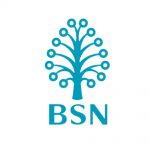Course Info
As English still stands as a common international language, being able to communicate professionally and proficiently with the language through communications training courses does give credibility for a positive corporate, professional, and personal image.
What Will I Learn From This Communications Training Course?
- Able to express appropriately and confidently in English at the workplace and social gatherings.
- Harness the techniques of listening and asking questions
- Able to form simple sentences using new and correct vocabularies with accurate pronunciation.
- Develop awareness of common grammatical and pronunciation errors and how to avoid them.
- Gain a better understanding of effective writing skills to improve clarity and impact.
This communications training course is designed to enhance your language skills for professional and social success.
Methodology
- Pre- and post-course assessment
- 30% theory facilitation 70% activities-based workshop
- Varied fun learning activities, video clips and role plays
Course Outline for This Programme
Module 1: The essentials of Business Communication in English
- The positive effectiveness of business communication in personal, professional and corporate environment.
- Four major skills in Business Communication : Listening, Reading, Speaking and Writing
- Removing barriers to excel in English business communication.
Module 2: Grammar and Vocabulary made easy
- Common grammatical errors
- Verb forms & Noun
- Various Tenses
- Singular and Plural forms
- Adjectives and Adverbs
- Prepositions
Module 3: Enhancing Listening and Reading proficiently
- Enhance Listening skill to understand the spoken message or conversation and able to reply or repeat/convey the message accurately to another party
- Understand the foreign tone and accent to understand the message for relevant action
- Enhance Reading skill to understand the meaning of the materials of information
- Perfecting pronunciation of unfamiliar words through reading practices
Module 4: Speaking English with confidence
- Clarity of speech in face-to-face communication to be understood
- Avoid unfamiliar words and jargon to maintain two-way communication
- Speak with appropriating effective tonality, voice, accent, and body language
- Speak with proper grammatical structure and pronunciation in communications training courses.
Module 5 : Enhancing Writing skill
- Purpose of writing
- Understand Writer and Reader’s styles to get better “buy in”
- 4Cs Golden Rules of Effective writing
- Written communication with K.I.S.S
Key Features of the Course
Interactive Learning
The communications training course spotlights engaging activities. Participants act out role-plays, exchange ideas in discussions, and explore real-world scenarios.
Customisable Content
Training moulds itself to workplace needs. Lessons tackle industry-specific challenges and sharpen communication goals.
Practical Techniques
Gain hands-on communication tools. Learn to write, listen actively, and deliver impressive presentations.
Certified Expertise
An expert trainer leads every session. The instructor carries over 30 years of real-world teaching experience.
Comprehensive Skill Set
Explore core business communication skills. Practice writing reports, following email rules, and settling conflicts professionally.
Why Choose Our Communications Training Course?
Our communications training courses sharpen essential workplace skills. Speak clearly and share ideas with confidence. Improve listening to grasp messages better. Develop professional writing for sharp emails and reports. Build strategies to lead negotiations and present effectively. Tackle real-life situations with practical exercises. Learn from trainers with deep industry expertise. Shape lessons to match your unique goals and challenges. Strengthen communication in meetings, teamwork, and daily tasks. Grow your career with refined and impactful skills.
Mr. Salwin Singh Gill is a Business Communications/Soft-Skills trainer with more than 30 years’ experience in banking, insurance, training as well as teaching/lecturing at institutions of higher learning. He specializes in Interpersonal and Communication Skills, Business Communication, Negotiaton Skills, Professional Business Writing, Technical Report Writing for Engineers, Internal Audit Report Writing and Academic Writing Skills. He also prepares students for the IELTS, MUET and TOEIC certifications together with Cambridge ESOL suite of exams.
He is a Certified Trainer (PSMB/HRDF) and holds a Bachelor of Arts (Hons) in Business Administration (U.K.) together with a Diploma in TESOL from the London Teachers Training College. He is a member of the Society for Editors and Proofreaders (SEPF - U.K.) and the Society for Technical Communications (STC - U.S.) and also consults organizations in areas of documentation design, development and editing/proof-reading.
Salwin has conducted various in-house training and public programmes, both for the corporate and public sector; some of the recent and notable ones being for: Agrobank Bhd, PETRONAS, UEM Bhd, Suruhanjaya Syarikat Malaysia(SSM), Royal Brunei Technical Services, Mitsubishi Motors, Panasonic Malaysia, Majlis Bandaraya Iskandar Puteri, Keretapi Tanah Melayu( KTM), Malaysian Association of Hotels (MAH), Suruhanjaya Pengangkutan Darat Awam (SPAD), Labuan Financial Services Authority, Curtin University - Sarawak, Technip Oil & Gas, KKEB Group Bhd, Johor Port Bhd, SME Bank Bhd, Jabatan Perkhidmatan Awam (JPA) and Malaysian Communications and Multi - Media Commission of Malaysia (MCMC), to name a few.
He delivers his training sessions in an interactive, practical, easy to understand manner and believes in creating rapport and engaging his audience. Furthermore, he adapts and contextualizes his training to meet the trainees’ abilities and requirements for optimum transfer of learning to the workplace.




